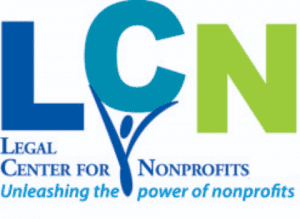Do you know what your organization’s bylaws say about quorum? If you know where your bylaws are, it may be a good idea to check!
“Quorum” means the minimum number of people that must be present for a body to transact business. Generally at the beginning of every board of directors meeting, the secretary takes attendance and determines whether a quorum is present, according to the terms of the organization’s bylaws.
The bylaws may specify, for example, that quorum is the “number of directors present at any meeting” or the quorum may be set at a specific number.
Massachusetts statute states that the quorum for a nonprofit board of directors is “a majority of the directors then in office”, unless the bylaws specify a different number. Where the bylaws specify the quorum, the bylaws govern. If the bylaws do not specify the requirement for quorum, then the Massachusetts statute serves as the default—“a majority of the directors then in office” is the quorum.
It’s essential to remember the context for this issue of quorum. Boards have oversight of their nonprofits; and boards can only act collectively and only in the presence of a quorum. The entire board should be making the decisions that will impact the nonprofit, and this responsibility may not be left to the few. Indeed, in organizations with executive committees, the board still must assert its oversight over the acts of the executive committee, through review and ratification. Charities must serve a public interest, and if the body actually doing the governing is too small, private interests may easily take over.
Occasionally failing to meet quorum requirements is not a problem. But remember that failing to meet quorum means that no business can be transacted, so even occasionally lacking quorum can cause substantial problems, should the agenda call for a key business decision.
Failing to meet quorum, if it happens frequently, is symptomatic of deeper problems. Sometimes boards respond to this problem by amending their bylaws to allow for a smaller quorum. This is not necessarily the best solution, since it can result in the organization being run by a small clique, leading to further disengagement of the other directors. In the same way, making the board of directors itself smaller may not be the best solution either. Depending on the organization’s work, a larger board may be the only way to ensure adequate oversight of the nonprofit (for more on board size, read this post). Nor is the creation of or defaulting to, an executive committee the solution, for the same reason. The best strategy is to grapple with the real problem—why board members have become disengaged.
The quorum rule also applies to members’ meetings—that is, meetings of individuals who are legal voting members of the organization. This body of members is in effect another level of governance hierarchy, and some different rules apply to them, and again, this a matter of state law.
Quorum is a concept directors of nonprofits must understand. It’s also one of those concepts that is often overlooked or ignored when things are proceeding smoothly but which can upset the organizational applecart when there are bumps in the road.
